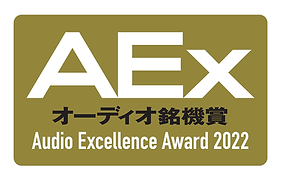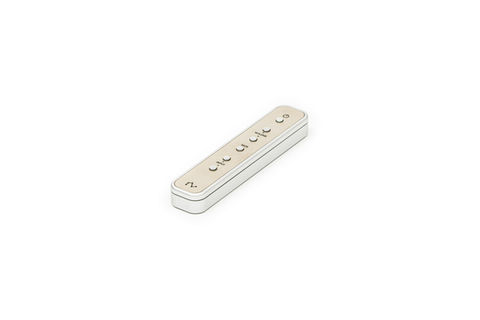



Pre-amplifier Reimagined
Completely redefines what the preamplifier's can and should do in your system

Reinventing
The Wheel
The Quest aims to be the perfect preamplifier to accompany the Rei amplifier and the cables lineup, completing the connection between your audio source and speakers. It sets out to redefine how a preamplifier contributes to the system and extracts the maximum potential from both the recorded music and the music reproduction system.
During the inception of the project, we extensively questioned the role of the preamplifier in an audio system and challenged whether it is truly necessary. We sought to understand the qualities that an added stage can bring and how it can improve the outcome. With a fresh start, we thoroughly investigated the relationship between the source and the amplifier, carefully examining each section of the preamplifier to improve every part and explore the synergy between them.
The Quest represents our dedication to optimizing the preamplifier's performance and its integration within the system. We have pushed the boundaries of conventional design and reimagined the possibilities. By meticulously refining each aspect, we aim to enhance the signal path and uncover new levels of performance.
Join us on this sonic journey as we challenge the status quo, redefine the preamplifier's role, and unlock the true potential of your music reproduction system.
TRUE MINIMALIST APPROACH
The industrial and electronic design of the Quest reflects the WestminsterLab tradition. It keeps unnecessary features and ornaments to a minimum, delivering a pure musical and user experience.
No fancy color display, UV meter, or distracting items. Prepare to rediscover your music.

Hybrid Grounding
Technology
The ground design and grounding scheme of the Quest have a significant impact on its performance, especially when dealing with delicate signals. We have put tremendous effort into designing the grounding of the Quest, resulting in the development of a new grounding scheme called Hybrid Grounding.
This scheme allows users to switch between two grounding modes on the fly, enabling them to configure their Quest specifically for their system and consider the grounding scheme as a whole. With Hybrid Grounding, users have the flexibility to optimize the Quest's performance by adapting the grounding configuration to their unique needs and preferences. This innovative feature enhances the overall audio experience and ensures that the Quest delivers exceptional sound quality.
Compartmentation and Shielding
We have gone to the ends of the world and taken extensive measures to protect the fragile signals passing through the Quest. Many signal handling relays feature a soft start mechanism, and sections within the unit are isolated and compartmentalized, ensuring that cross-interference is minimized. For customers who want the best of the best, they can choose to purchase the extended carbon fiber option, which adds an additional layer of carbon fiber shielding inside the unit.
Mouse over the image on the right to see the difference!
basic configuration
with Extented Carbon Pack

Expandable Future
At the rear of the unit, there are two slots specifically designed to accommodate future expansion modules. These slots offer users the flexibility to incorporate additional input functions into the unit by designing and installing custom modules. These expansion slots serve as a forward-thinking feature, allowing for easy and seamless integration of new functionalities as they become available.
With these expansion options, users can enhance the capabilities of the unit to meet their evolving needs without the need for purchasing an entirely new device. This future-proof design ensures that the unit remains adaptable and compatible with emerging technologies, providing a cost-effective and versatile solution for users.
International Awards



Gallery
SPECIFICATION
Quest
Distortion
<0.0001% @ 1kHz
Signal-to-Noise Ratio
>120dB, unweighted
Input
3 sets of balanced XLR input
2 optional modules
Input Impedance
51 kΩ
Input Voltage
6Vrms
Frequency Response
2Hz to 100kHz, 0.1dB
Outputs
2 sets of balanced XLR outputs
Output Voltage
12Vrms
Channel Separation
>120dB
Gain
6.5dB
Volume Control Range
0 to -63dB / Mute
Dimensions
W470 x H110 x D392 mm
Weight
13.2KG
OPTIONAL MODULE SPECIFICATION
DS Audio Equaliser
Input
1 set of unbalanced RCA input
Gain
27dB
Compatibility
All DS Audio cartridges. DS Audio certified equaliser.
Outputs
19pin proprietary socket
MC/MM Phono
Input
1 set of balanced XLR input or
1 set of unbalanced RCA input
Input Impedance
60Ohm to 47kOhm ( 18 steps )
Loading Capacitance
22pF to 322pF ( 5 steps )
Gain
40dB to 70db ( 4 steps )
Compatibility
Variety of modern and vintage MC/MM/MI cartridges.
Outputs
19pin proprietary socket
RCA Input
Input
1 set of unbalanced RCA input
Input Impedance
51 kΩ
Input Voltage
6Vrms
Frequency Response
2Hz to 100kHz, 0.1dB
Outputs
19pin proprietary socket
Gain
6dB















